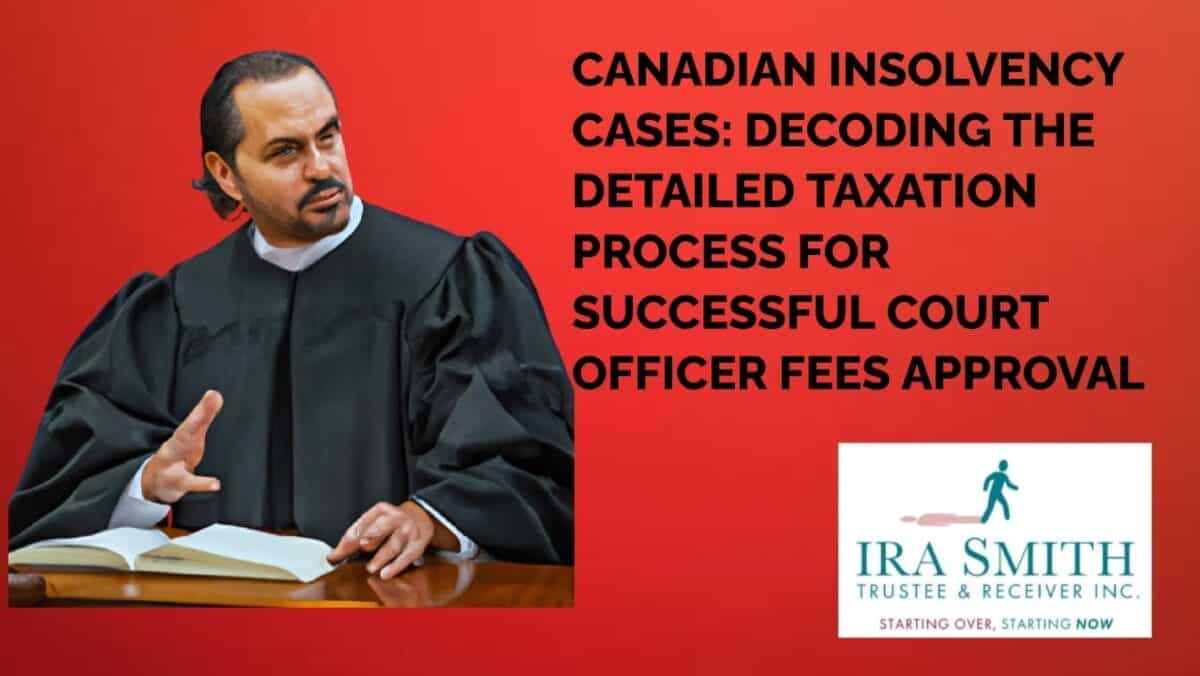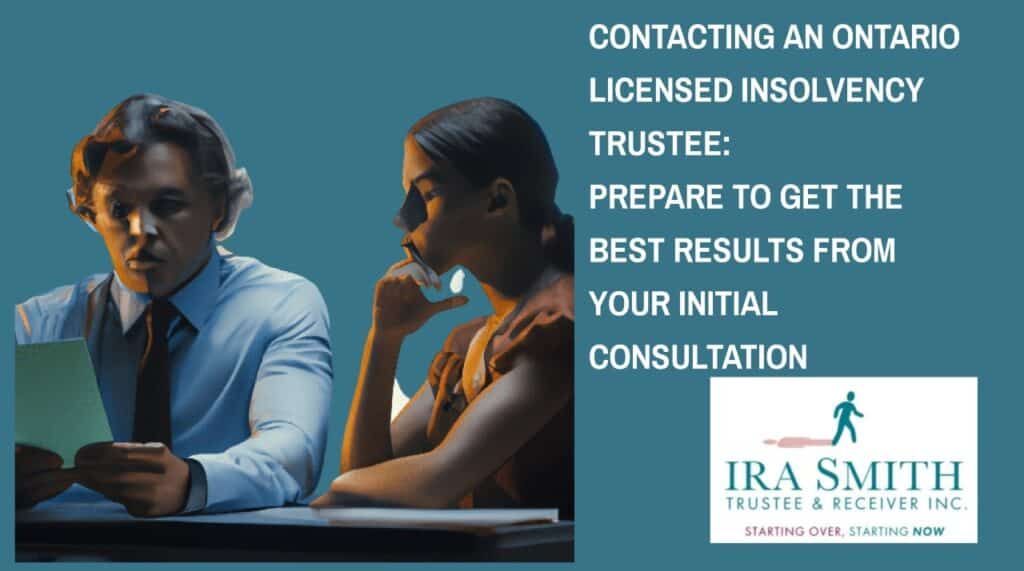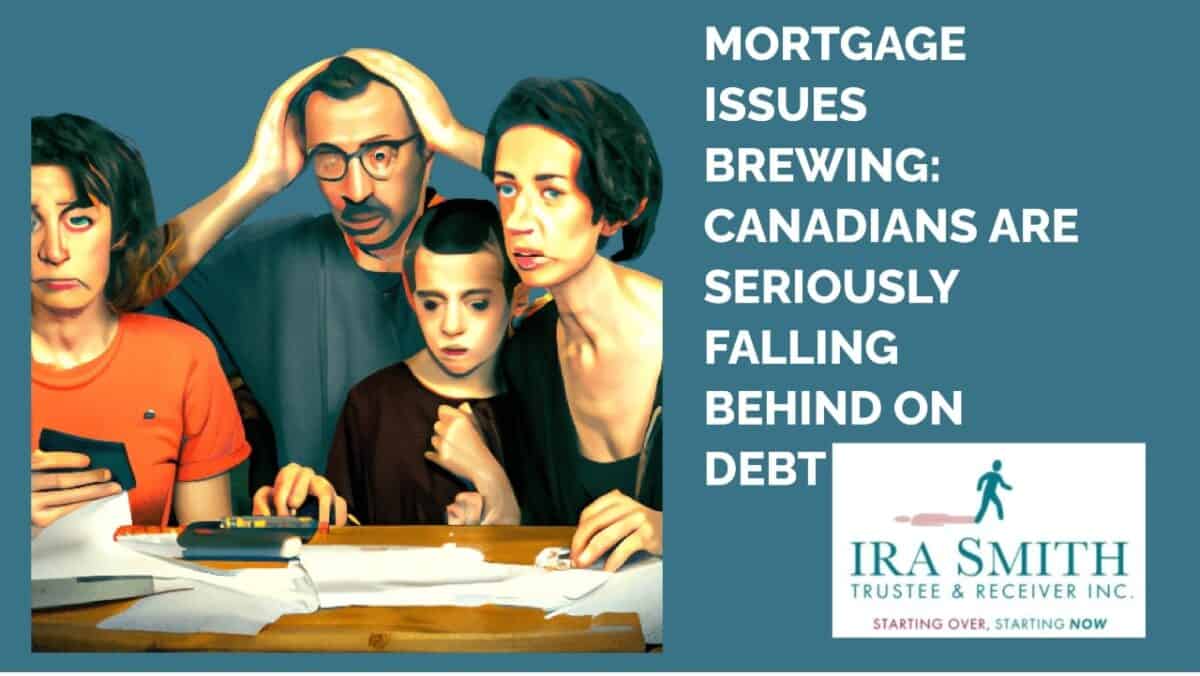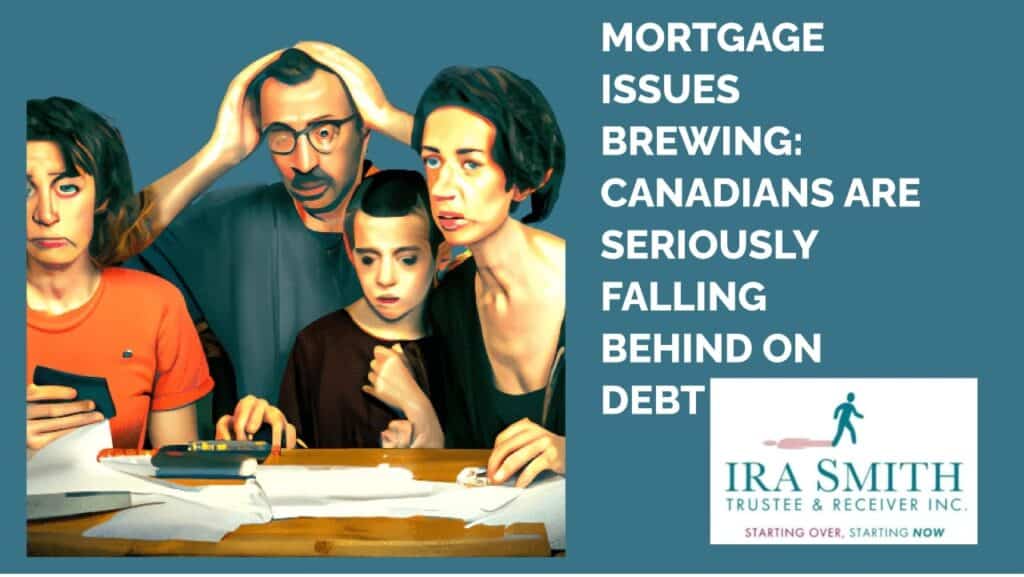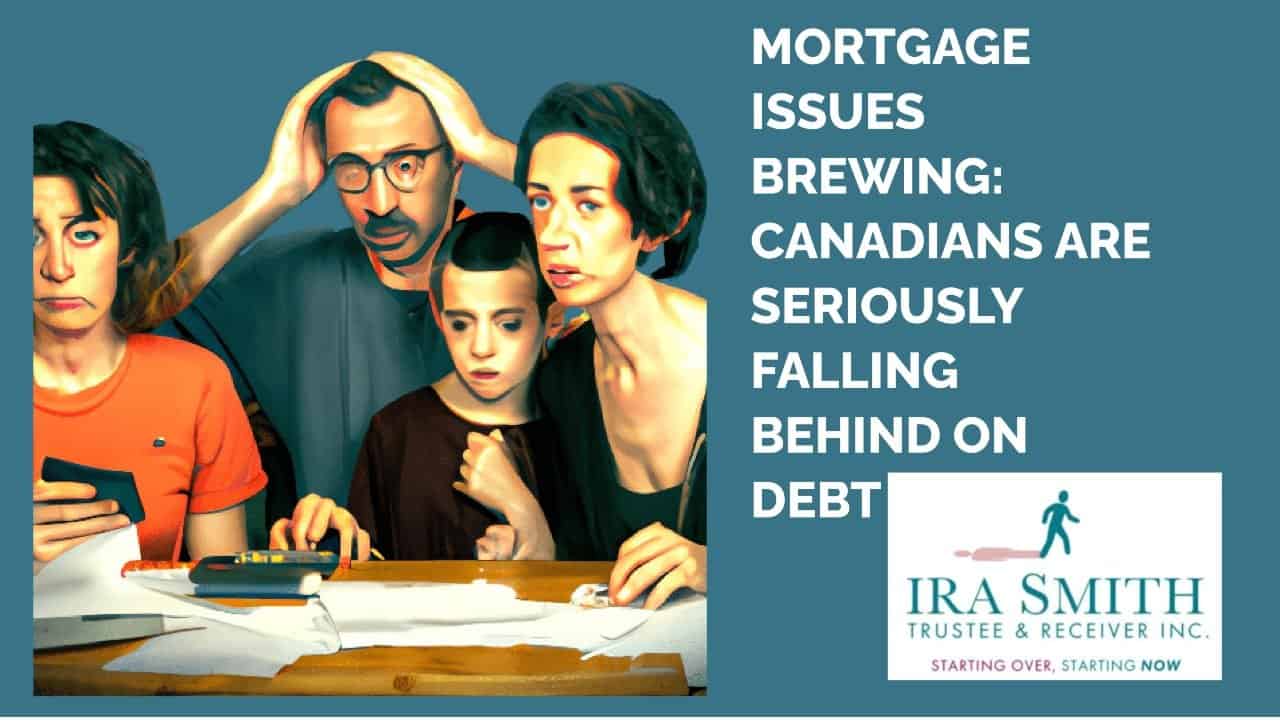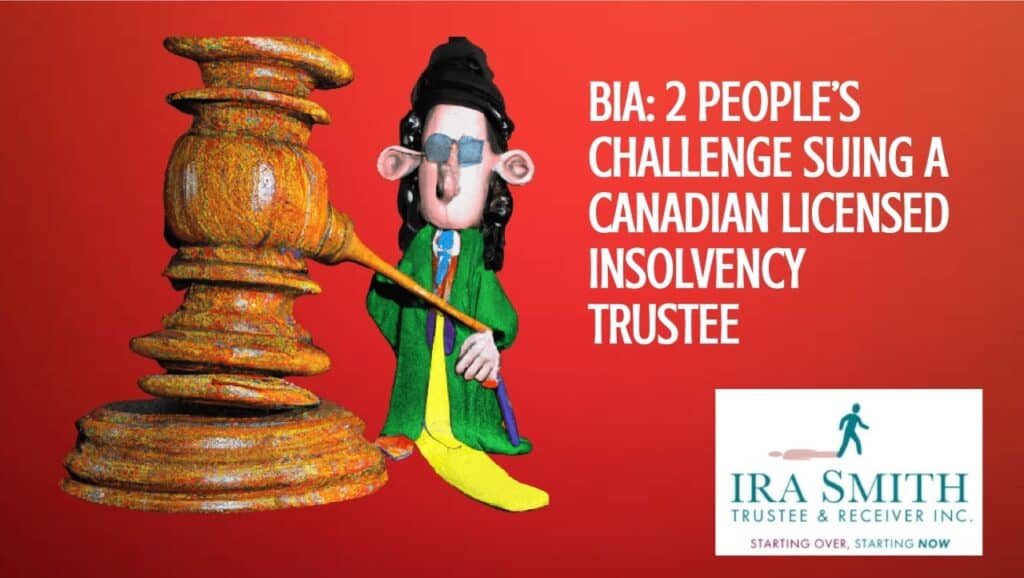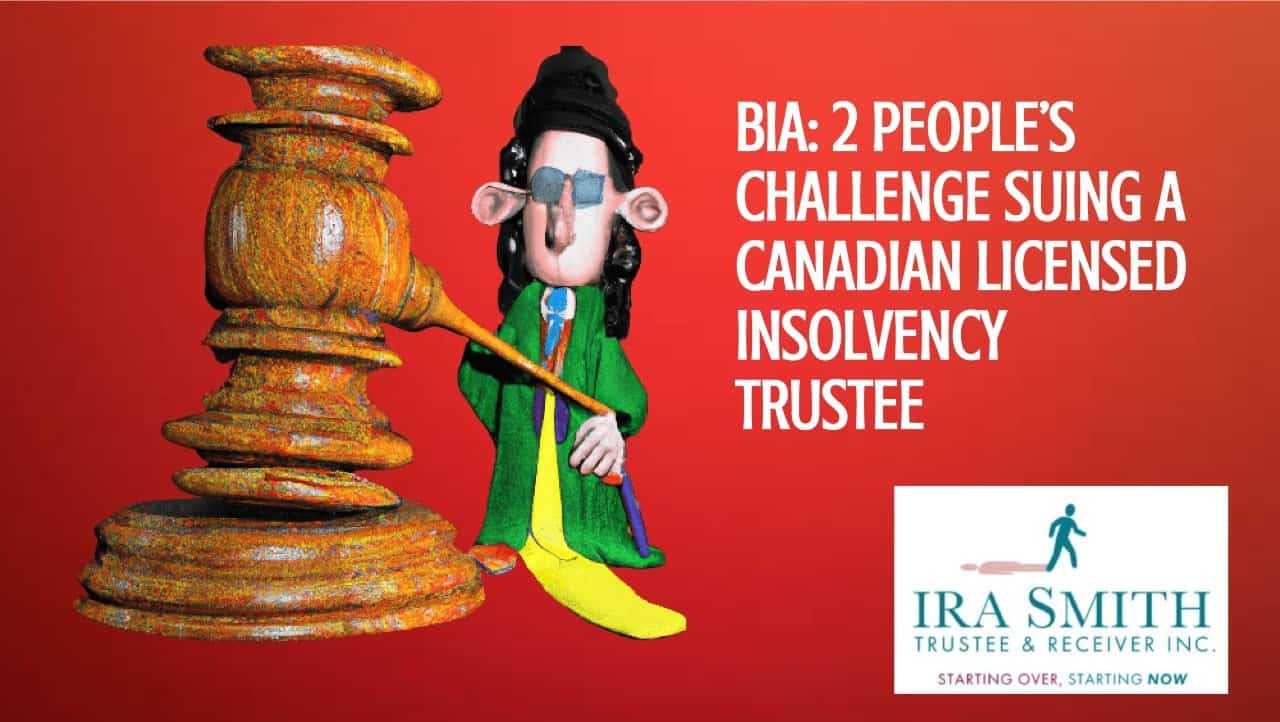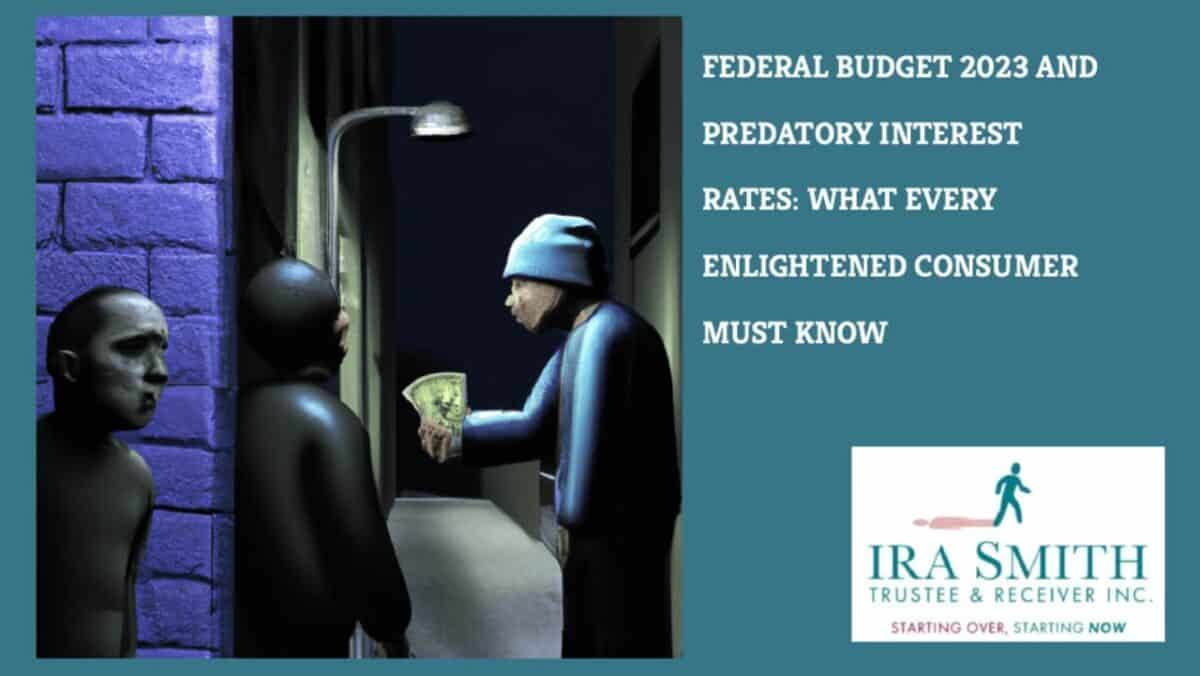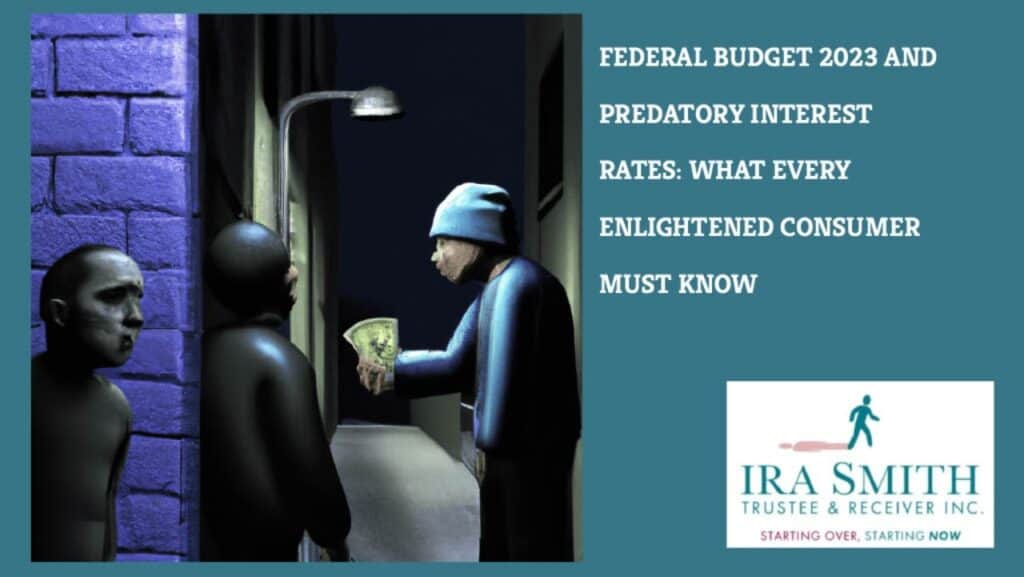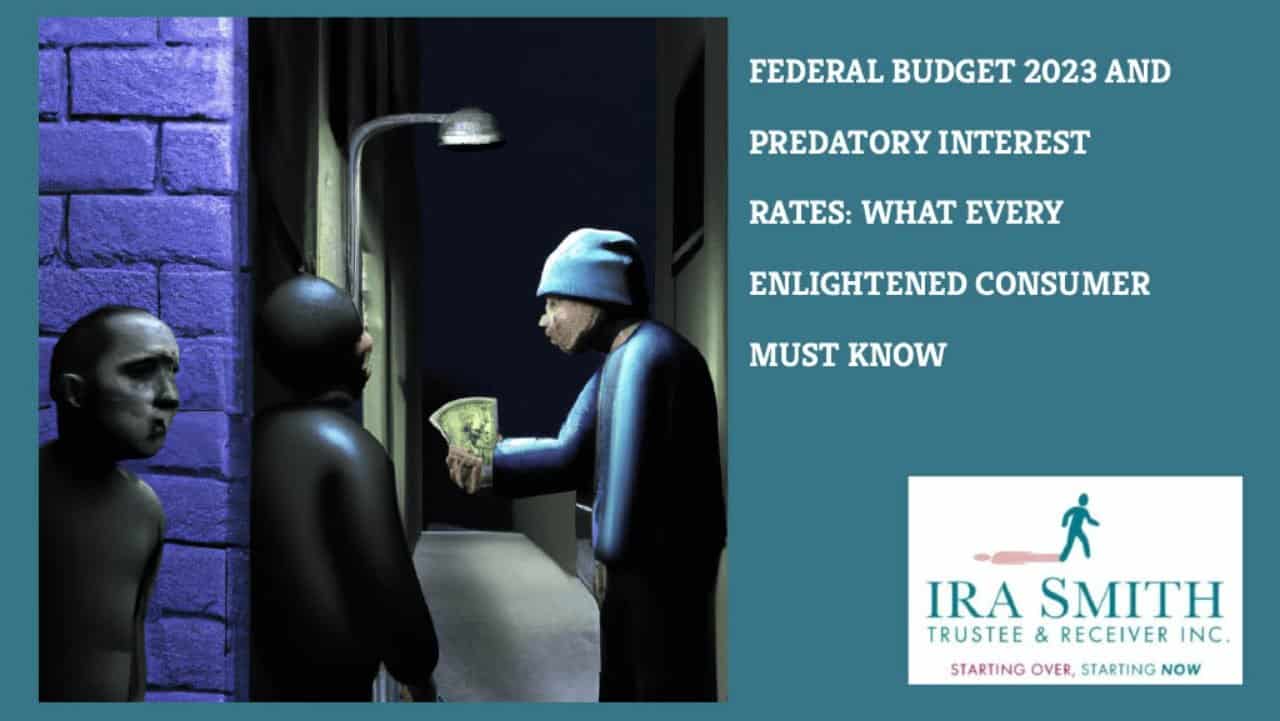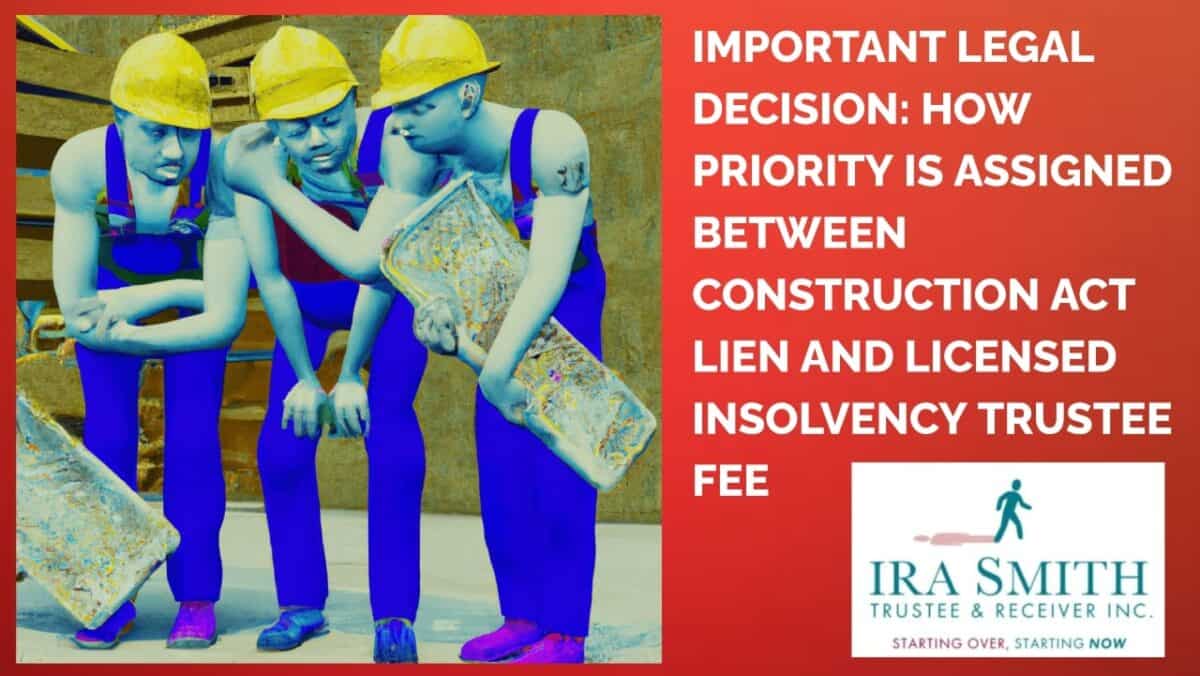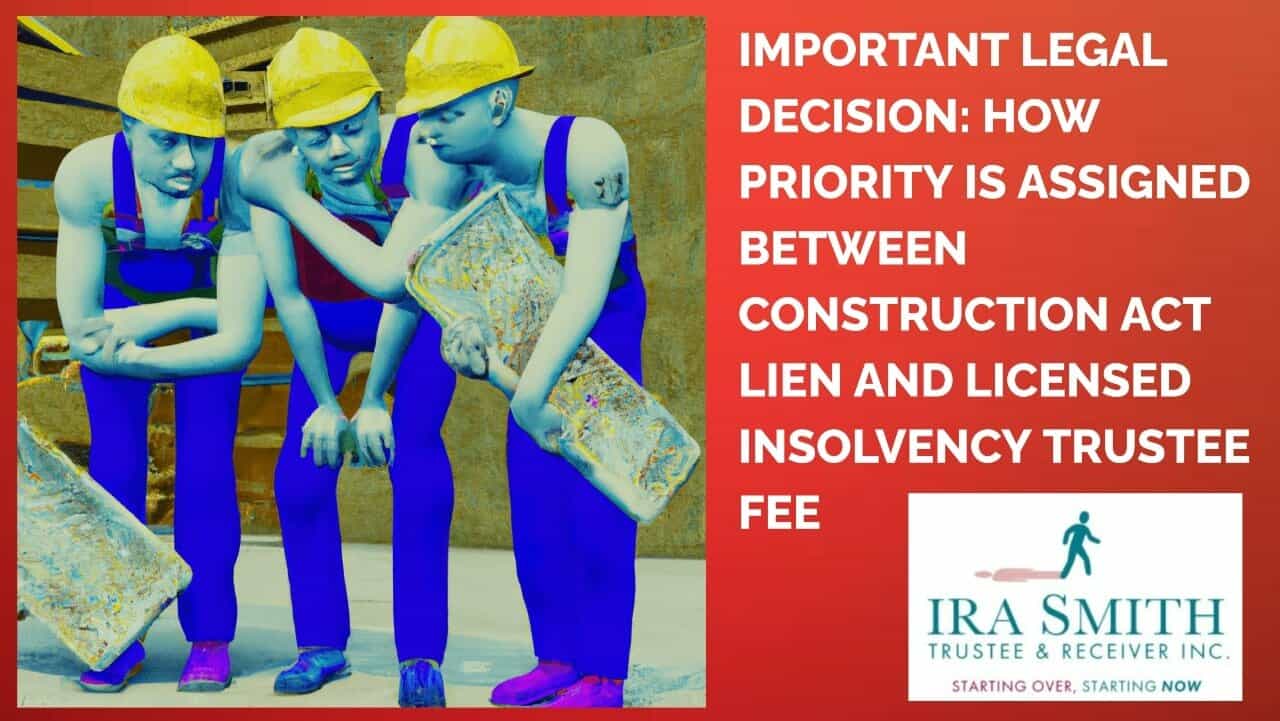Canadian insolvency: Introduction
As Canadian insolvency laws progress, so do the regulations surrounding the taxation of court officer fees. These fees often make up a considerable proportion of the expenses incurred during insolvency proceedings. It is absolutely essential for insolvency practitioners, legal professionals, and other parties involved in such cases to comprehend the critical factors that affect the taxation of court officer fees.
Knowing the taxation procedure for court officer fees in Canadian insolvency cases that are supervised by the court is significant for various reasons. The following points highlight some of the crucial aspects to consider:
- Promoting Transparency and Accountability: The taxation procedure guarantees transparency and accountability in the assessment of court officer fees. It encompasses an autonomous evaluation of the charges imposed by court-appointed officials, such as trustees, receivers, monitors, or liquidators. By comprehending this procedure, interested parties can ascertain that the fees are reasonable and justified.
- Safeguarding Stakeholder Interests: Insolvency proceedings encompass multiple stakeholders, including lenders, borrowers, and stockholders. The taxation process aids in safeguarding their interests by scrutinizing the fees imposed by court officers. It ensures that the charges align with the services rendered and prevents exorbitant or unwarranted levies.
- Fostering Confidence in the System: By establishing a robust taxation process, the court-supervised insolvency system in Canadian proceedings instills confidence among stakeholders. They can place their trust in the fact that the fees imposed by court officers undergo independent scrutiny and are not arbitrary. This bolsters the overall credibility and integrity of the Canadian insolvency process.
- Alleviating Financial Burdens: Insolvency proceedings can present financial hardships for both debtors and creditors alike. Familiarizing oneself with the taxation process enables stakeholders to identify any potential excessive fees and seek recourse if necessary. This helps mitigate additional financial burdens on parties already grappling with financial difficulties.
- Facilitating Efficient Resolution: The taxation of costs process fosters efficiency in resolving disputes pertaining to court officer fees. In the event of a disagreement over the charges imposed, a taxation hearing is conducted to settle the dispute. By grasping the intricacies of the process, stakeholders can navigate it adeptly, leading to a prompt resolution and averting unnecessary delays.
To provide a comprehensive overview, it is of utmost importance to grasp the intricacies of the taxation procedure pertaining to the fees charged by court officers in Canadian insolvency proceedings under court supervision. Such understanding not only ensures transparency but also safeguards stakeholder interests, fosters confidence in the system, mitigates financial burdens, and facilitates the efficient resolution of disputes related to fees.
In this Brandon’s Blog, I delve into the multifaceted aspects that shape the taxation of costs. Through this exploration, my aim is to offer valuable insights that will assist you in navigating this intricate domain. Come join us as we embark on an exploration of the nuanced intricacies of Canadian insolvency law and the myriad factors influencing the taxation of court officer fees.
Understanding The Role of Court Officers in Canadian Insolvency Cases
Definition and Role of Court Officers
Within the framework of a Canadian insolvency proceeding supervised by the court, a crucial role is fulfilled by the Licensed Insolvency Trustee (LIT). Acting as a court-designated official, the LIT plays an integral part in facilitating the management of the case and ensuring a fair and efficient process.
Endowed with accreditation from the Office of the Superintendent of Bankruptcy (OSB), LITs as insolvency professionals are highly skilled experts possessing extensive expertise and experience in the realm of bankruptcy and insolvency. They act as unbiased and autonomous professionals, tasked with overseeing the insolvency proceedings in compliance with legal norms and regulations.
As a court-appointed officer, the LIT’s responsibilities are multifaceted and encompass a wide array of duties. These may encompass:
- When confronted with the financial circumstances of a debtor, it becomes imperative to adopt a comprehensive methodology. Licensed Insolvency Trustees (LITs) excel at appraising the debtor’s assets and ascertaining the optimal strategy for disbursing them among creditors. Through meticulous evaluation of the debtor’s fiscal position, LITs can contribute to guaranteeing a just and impartial allocation of assets to all relevant parties. With their proficiencies in debt and asset administration, LITs serve as invaluable for individuals confronted with financial problems.
- Facilitating meetings of creditors: LITs organize and conduct meetings where creditors can voice their concerns, vote on important matters, and provide their consent or objections regarding the insolvency process.
- Developing a proposal or managing bankruptcy proceedings: Depending on the type of insolvency proceeding (such as a consumer proposal or bankruptcy), LITs may assist debtors in developing a proposal to settle their debts or administer the bankruptcy process if the proposal is not viable.
- Investigating the affairs of the debtor: LITs have the authority to investigate the debtor’s financial affairs, including examining their records, transactions, and conduct, to identify any fraudulent activities or preferences that may impact the distribution of assets.
The above is the case regardless of whether it is a personal insolvency administration or a corporate insolvency one.

Types of Court Officers in Canadian insolvency cases
In the course of Canadian insolvency proceedings, the court possesses the authority to carry out diverse designations involving a LIT to supervise and manage the operation. These designations hinge upon the nature of the insolvency instance and the particular circumstances. Here, I present the normal kinds of designations that a court could enact:
Bankruptcy Trustee
In scenarios of personal or corporate bankruptcy, the LIT acting as the trustee of the bankrupt estate is automatically an officer of the court. The trustee assumes the responsibility of administering the bankruptcy, handling the assets, and disbursing the proceeds to creditors in accordance with the Bankruptcy and Insolvency Act (Canada) (BIA).
Interim Receiver
In certain Canadian insolvency cases, the court may opt to appoint an interim receiver under the BIA, who will serve as a temporary custodian. The primary goal of an interim receiver is to safeguard and preserve the debtor’s assets during the insolvency process.
They are authorized to take control of the debtor’s property and make necessary arrangements to ensure its proper management and security. Typically, an interim receiver is appointed when:
- there is a risk of asset dissipation before the court hears an Application for Bankruptcy Order; or
- when the debtor intends to sell some or all of its operating assets during a Division I Proposal administration and requires court approval for the sale, with the LIT who is acting as Proposal Trustee also assisting in the sale.
Proposal Trustee
In cases where an insolvent debtor files a consumer proposal or a corporate proposal under the BIA, the LIT acting as the proposal trustee of the insolvent debtor is automatically an officer of the court. The proposal trustee is accountable for evaluating the proposal, conducting meetings with creditors, supervising the restructuring process and the implementation of the approved proposal and making the necessary distribution to the unsecured creditors.
Monitor
In larger corporate insolvencies under the Companies’ Creditors Arrangement Act (CCAA), the court designates a LIT to act as a monitor. The monitor acts as an independent third party and oversees the affairs of the debtor, ensures adherence to the CCAA procedure, and reports to the court and creditors. The monitor also oversees the restructuring process and the implementation of the restructuring plan.
Receiver
In the course of a Canadian insolvency proceeding, a receiver appointed by the court assumes control and oversees the management of a debtor’s assets. The receiver’s principal purpose revolves around the preservation of creditors’ interests and the facilitation of an organized administration process.
The appointment through a court-ordered receivership commonly occurs in situations where the debtor has defaulted and has no capacity to fulfill its financial obligations or when the need arises to safeguard and conserve the value of the debtor’s assets.
The receiver possesses extensive authority granted by the court to competently execute their responsibilities. These authorities encompass aspects such as assuming possession and control of the debtor’s assets, managing and liquidating assets, collecting outstanding debts, investigating the debtor’s financial matters, and disbursing proceeds to creditors in alignment with the court’s directives.
Liquidator
The court can appoint a liquidator in the case where the debtor company is solvent but the business is no longer viable. The company, with the assistance of the LIT who is the court-appointed liquidator, can collect on and sell its assets and there will be sufficient funds to pay off all the creditors and have money left over to distribute to the shareholders.
What do all of these court officers have in common?
All of the above various court officer appointments have one thing in common. To ensure an impartial and equitable process, the LIT appointed as the court officer assumes the role of an autonomous entity separate from the debtor and the creditors. They remain accountable to the court and bear a fiduciary duty toward the stakeholders involved.
The appointment of a court officer aims to facilitate the systematic resolution of the Canadian insolvency case (or in the case of a liquidation, the liquidation administration) while safeguarding the interests of the stakeholders involved, by entrusting the responsibilities to the LIT acting as an independent party possessing the requisite expertise in asset management and the resolution of financial disagreements and predicaments.
The appointments will differ depending on the specific circumstances of each case. The court possesses the discretion to enact appropriate designations with relevant powers granted to the LIT as the court officer to ensure the efficient administration and safeguarding of the rights of the debtor and creditors.

Understanding court officer fees in Canadian insolvency cases
In the realm of Canadian insolvency procedures, the proficiency of court-appointed officers is paramount and unswerving, as they assume a pivotal and irreplaceable function in the management and safeguarding of assets to benefit creditors. LITs bear the weighty responsibility of overseeing the course of insolvency proceedings, ensuring an impartial allocation of assets, and facilitating intricate financial resolutions.
As a testament to their outstanding contributions, court-designated officers are rightfully entitled to specific remunerations, acknowledging their unwavering commitment and specialized expertise. This section of the article aims to embark upon a comprehensive exploration of the diverse fee structures associated with court-appointed officers within the Canadian insolvency administration framework.
Initial retainer fee
Prior to their appointment and as a condition of consenting to act, court-appointed officers may necessitate an initial retainer fee. This fee acts as an upfront payment for their services and covers the preliminary expenses associated with commencing the insolvency administration process. The determination of the retainer fee typically hinges on the intricacy of the case and the complexity of the estate. The retainer amount is credited against the total fees earned as approved by the court.
Fee for administrative purposes
The administration fee constitutes an additional classification of court officer fees. Its objective is to cover the continuous administrative expenses accrued during the process of insolvency administration. This is the professional fee of the court officer, calculated by the hours worked by each level of staff of the court officer, at their standard hourly rates. This is the most common type of court officer fee.
Asset Realization or performance-based fee
It is possible in unique situations where the sale of assets will be very complex, the court officer earns an asset realization fee. It is earned only if the LIT is successful in disposing of the assets belonging to the insolvent estate or obtains a value above some pre-determined threshold amount. The court officer’s hard work in assessing, marketing, and selling assets is crucial to ensuring that creditors receive the best possible returns. Generally, the asset realization fee is calculated as a percentage of the total value of the realized assets or as a percentage of the revenue generated above the pre-determined threshold from the sale of assets.
Disbursements
In addition to the aforementioned fees, court-appointed officers are entitled to charge for their reasonable disbursements incurred during the course of their duties. Disbursements may encompass expenses relating to travel, professional services, legal fees incurred by the court officer, court filings, third-party valuations or appraisals, and other essential costs directly associated with the administration of the insolvency proceedings. The court officer is obligated to maintain meticulous records and furnish comprehensive accounts of the disbursements (and fees) for scrutiny and approval.
Significance of the checks and balances in the court taxation process for court officer fees
In all of the above cases, it is crucial to underscore those court-appointed officer fees and disbursements are subject to judicial oversight and scrutiny to ascertain their reasonableness and justifiability in light of the services rendered. The court possesses the authority to review and endorse these fees, factoring in elements such as the complexity of the case, the qualifications of the court officer, the scope of work performed, and the benefits conferred upon the stakeholders involved.
Court-appointed officers engaged in Canadian insolvency administrations are entitled to a potentially diverse array of fees, commensurate with their indispensable role in the management and preservation of assets. These fees encompass the initial retainer fee, administration fee, asset realization fee, performance-based fee, and reasonable disbursements. By duly compensating court-appointed officers for their unrivalled expertise and unwavering commitment, the insolvency administration process can proceed seamlessly, instilling confidence among creditors regarding the equitable and effective management of the insolvent estate.

Taxation process for court officer fees
The intricate procedure of taxing court officer charges in Canadian insolvency cases is a multifaceted framework that is influenced by numerous pivotal elements. Grasping these elements is of utmost importance for court officers and stakeholders alike, as it directly affects the amount of remuneration received by court officers for their labour and what is accessible to be allocated to the creditors in the priority of their ranking.
By conducting comprehensive evaluations of numerous Canadian insolvency cases, the court has established a series of benchmarks for the taxing process in scrutinizing and endorsing the fee and disbursements of a court officer. The taxing process is impelled by a variety of distinctive elements that necessitate meticulous attention to detail.
In essence, by acquiring a lucid comprehension of the taxing process and its implications, court officers can ensure that they obtain equitable compensation for their labour, while concurrently providing clients with a valuable service. Here are the elements that a court scrutinizes when determining the appropriateness of the fee and disbursements levied by its court officer.
Canadian insolvency cases: What are the factors that the court considers in the taxation of costs process for court officer fees
Preparation and submission of taxation of costs materials
The court officer’s application for the approval of its fee and disbursements is like any other court application. There needs to be the proper legal documents and evidence. The evidence is normally the court officer’s report to the court accompanied by invoices and detailed time dockets, sufficient to show what steps were taken in the administration for the specific date range, by who and at what professional hourly rate. This would be the case not only for the court officer but also for legal counsel providing legal services to the court officer.
This evidence would be accompanied by a sworn affidavit from an official from the court officer’s firm and the legal firm providing legal advice to the court officer, attesting to the accuracy of the time kept and that the hourly rates charged were the standard hourly rates. This would be for the administrative fee described above. If the court officer or its legal counsel feels they are entitled to any other type of fee, that evidence would also have to be put forward. An example would be a signed and accepted engagement letter between the court officer and the applicant in the original litigation that resulted in the appointment of the court officer.
The remaining procedures and documents are the ones that the lawyer acting on behalf of and providing legal advice to the court officer normally does such as obtaining a court date and preparing the notice of motion, factum and draft order, filing it with the court, effecting service on all interested parties and providing proof of service.

What are the legal cases that the Ontario court follows as precedents in assessing court officer fees in Canadian insolvency cases?
The Ontario court pays close attention to and follows several significant legal cases regarding the taxation of court officer fees when assessing the amounts in issue. These cases are:
Bank of Nova Scotia v. Diemer, 2014 ONSC 365 at paragraph 3, citing Re Bakemates International Inc., [2002] O.J. NO. 3659 (Ont. C.A.) – These cases establishes the essential principle that court officers must provide evidence to support the fairness and reasonableness of their requested compensation when seeking approval from the court. The court acknowledges its power to modify the fees and charges imposed by court officers, ensuring a just outcome is achieved.
Re Nortel Networks Corporation et al, 2017 ONSC 673 at paragraph 15, quoting Bank of Nova Scotia v. Diemer, 2014 ONSC 365 at para. 19, aff’d 2014 ONCA 851 – The court is not obligated to scrutinize the intricate details of dockets, hours, explanations, or disbursements. Instead, it has the authority to take into account all pertinent factors and make a more comprehensive assessment when awarding costs or fees. The Court of Appeal has emphasized that the primary focus should be on the achieved results, rather than the amount of time expended in achieving them.
Jethwani v. Damji, 2017 ONSC 3524 at paragraph 49 quoting HSBC Bank Canada v. Mahvash Lechcier-Kimel, 2014 ONSC 1690; aff’d 2014 ONCA 721.- In the context of a court-supervised Canadian insolvency case, if the actions of the court officer are considered imprudent and/or unreasonable, the fees and disbursements for the amounts in issue resulting from such conduct may be deemed unfair and unreasonable. This means that the court officer may not be entitled to receive full compensation for their services if their actions during the administration are deemed inappropriate or unreasonable.
Analyzing the prudence and reasonableness of the court officer’s conduct entails subjective interpretation, usually falling within the purview of the supervising court in Canadian insolvency proceedings. The court will consider an array of factors, including the accomplishments of the court officer, the encountered challenges, and the alignment of actions with the court’s directives and the best interests of all parties involved.
Should the court determine that the court officer’s actions were imprudent or unreasonable, they possess the authority to make appropriate adjustments to the fees and expenses. This adjustment is rooted in the notion that compensation ought to correspond to the level of performance and reasonableness demonstrated throughout the entire Canadian insolvency case.
What will the court specifically consider during the taxation process?
Based on the above cases, the Canadian courts will consider a non-exhaustive list of factors in determining whether a Court officer’s fees are fair and reasonable, including the:
- nature, extent and value of the assets handled;
- complications and difficulties encountered;
- degree of assistance provided by the company, its officers or employees;
- time spent;
- court officer’s knowledge, experience and skill;
- diligence and thoroughness displayed;
- responsibilities assumed;
- results of the court officer’s efforts; and
- cost of comparable services and service providers in the jurisdiction when performed in a prudent and economical manner.

canadian insolvency
Canadian insolvency court officer best practices: Enhancing performance and safeguarding interests
In my view, court officers should adopt a set of best practices that can greatly contribute to their effectiveness. These practices should include the implementation of a signed engagement letter in Canadian insolvency court proceedings.
The Importance of a signed engagement letter
The signed engagement letter holds immense significance as it meticulously outlines the extent, nature, and expenses associated with the tasks to be undertaken by a court officer in Canadian insolvency court proceedings. By formalizing the agreement between the court officer and the Applicant, this document sets clear expectations and offers a wide array of benefits to both parties involved.
1. Ensuring clarity and defining the scope of work
With a signed engagement letter, the responsibilities and duties of the court officer become unambiguously clear. It provides a precise delineation of the work’s scope, encompassing specific tasks, deadlines, and deliverables. Such lucidity fosters a mutual understanding between the court officer and the Applicant, effectively minimizing potential misunderstandings or future disputes.
2. Safeguarding legal interests
The possession of a signed engagement letter serves as concrete legal protection for both the court officer and the Applicant. It acts as tangible evidence of the agreed-upon terms, substantially reducing the likelihood of contractual conflicts. In instances of disagreements or misunderstandings, this engagement letter stands as a binding agreement, effectively safeguarding the interests of both parties.
3. Transparent cost structure
The engagement letter offers a transparent overview of the expenses associated with the court officer’s services. It explicitly outlines the fee structure, payment terms, and any additional costs that may arise throughout the court proceedings. This transparency enables the Applicant to aptly plan their budget, effectively averting any unforeseen financial surprises.
4. Aligning expectations
By explicitly defining the nature of the work to be performed, an engagement letter ensures a shared understanding between the court officer and the Applicant. It empowers the Applicant to comprehend the services they will receive and the level of assistance they can expect from the court officer. Simultaneously, it grants the court officer the opportunity to clarify their role and set realistic expectations for the Applicant, thus fostering a productive and harmonious working relationship.
5. Professionalism and credibility enhancement
When a court officer provides a signed engagement letter, it showcases their professionalism and credibility. This letter is proof that the officer is dedicated to upholding ethical standards and providing high-quality services. It also reassures the client that they are working with a skilled and responsible court officer. Overall, a signed engagement letter is a crucial element that enhances the court officer’s reputation and builds trust with their clients.
6. Documentation for effective record-keeping
The engagement letter assumes a pivotal role as an indispensable document for meticulous record-keeping purposes. It ensures that all pertinent details regarding the court officer’s engagement and the scope of work are meticulously documented in writing. This comprehensive documentation becomes invaluable when the need for future clarifications or reviews of the work arises.
In summary, incorporating a signed engagement letter into court proceedings is an indispensable best practice for court officers. It fosters clarity, safeguards legal interests, establishes transparent cost structures, aligns expectations, enhances professionalism and credibility, and facilitates effective record-keeping. By adhering to these practices, court officers can significantly enhance their performance and effectively safeguard the interests of all parties involved.
Advantages of meticulous record-keeping for fee statements in court-supervised Canadian insolvency proceedings
Within court-supervised Canadian insolvency proceedings, the court officer assumes a pivotal role in managing the intricate financial aspects of the process. The presence of comprehensive and precise documentation of fee statements yields substantial advantages for both the court officer and the stakeholders involved. Let’s delve into these benefits in greater depth:
1. Transparency and accountability
Thoroughly documented fee statements establish transparency and accountability concerning the financial transactions carried out by a court officer. They empower stakeholders to obtain a lucid comprehension of the imposed fees and the corresponding services rendered. By upholding meticulous records, the court officer can manifest their unwavering dedication to impartiality and ethical conduct, fostering trust among the stakeholders.
2. Justification of fees
Court officers are entitled to receive fair compensation for the provision of their services. By diligently documenting fee statements, court officers can substantiate the fees they levy. These records delineate the precise tasks undertaken, the invested time, and the intricacy of the involved work. Such comprehensive details enable stakeholders to grasp the value that the court officer brings forth and diminish the likelihood of fee-related disputes.
3. Mitigation of legal complications
By ensuring the scrupulous documentation of fee statements, court officers can mitigate the risk of legal issues and the need for additional legal services stemming from erroneous or incomplete records. Given the exacting financial reporting requirements within court-supervised Canadian insolvency proceedings, precise and comprehensive fee statements contribute to adherence to regulatory standards, thereby minimizing the potential for legal entanglements.
4. Augmented stakeholder confidence
Stakeholders, encompassing creditors, the debtor being the insolvent company, and the court itself, repose profound trust in court officers’ ability to navigate the intricacies of insolvency proceedings. Meticulously documented fee statements act as tangible evidence of the court officer’s professionalism and dependability. This documentation instills stakeholders with the assurance that the court officer conducts their duties transparently and diligently, cultivating confidence in the overall process.
5. Efficient resolution of disputes
In situations where fee disputes or disagreements arise, the presence of thorough documentation becomes invaluable. Detailed records provide a foundation for resolving conflicts through negotiation or formal channels. They serve to facilitate discussions, clarify any misinterpretations, and reach mutually agreeable solutions. This expedites the resolution of disputes and upholds positive relationships between the court officer and stakeholders.
6. Adherence to reporting requirements
Court-supervised Canadian insolvency proceedings necessitate compliance with various reporting obligations, including financial disclosures. Meticulous documentation of fee statements ensures adherence to these reporting requirements. Accurate and well-documented fee statements streamline the preparation of essential reports, facilitate the maintenance of audit trails, and fulfill regulatory obligations. This enables court officers to fulfill their responsibilities effectively and ensures the smooth progression of proceedings.
7. Cultivation of professional reputation
Maintaining meticulous documentation of fee statements contributes to the cultivation of a court officer’s professional reputation. Accurate and organized records serve as a testament to the court officer’s unwavering commitment to professionalism and attention to detail. This meticulousness resonates positively within the legal and insolvency communities, potentially opening doors to future opportunities and referrals.

Advantages of timely and effective communication for court officers and stakeholders
Timely and effective communication plays a vital role in the court officers’ quest to maintain transparency and foster positive relationships with stakeholders. By giving due importance to clear and consistent communication concerning their actions, activities, and fees charged, court officers bring forth numerous benefits for themselves and the stakeholders involved. Let’s delve into these advantages in detail:
1. Improved comprehension and trust
Timely and effective communication empower court officers to articulate their actions and activities in a manner that stakeholders can readily grasp. By providing regular updates and reports, court officers ensure that stakeholders possess a comprehensive understanding of the progress and status of the proceedings. This level of transparency nurtures trust and instills confidence in the court officers’ capabilities, thereby fostering a productive and harmonious working relationship.
2. Heightened collaboration and cooperation
Maintaining open channels of communication enable court officers and stakeholders to exchange relevant information and actively engage in the proceedings. Effective communication facilitates seamless collaboration, leading to improved decision-making and problem-solving. This collaborative approach streamlines the legal process and paves the way for a more efficient resolution.
3. Timely resolution of issues
Timely communication empowers stakeholders to promptly address any concerns or issues that may arise. By promptly sharing information and seeking feedback, court officers can identify and resolve potential challenges or conflicts in a timely manner. This proactive approach minimizes disruptions, reduces delays, and ensures that the proceedings stay on track.
4. Transparent cost structure and budget management
Effective communication regarding fees charged equip stakeholders with a clear understanding of the costs involved in the legal process. Court officers can provide detailed explanations of the fees charged, including any additional expenses. This transparency empowers stakeholders to effectively manage their budgets, enabling them to anticipate and plan for the financial aspects of the proceedings.
5. Mitigation of misunderstandings and disputes
Clear and timely communication acts as a safeguard against misunderstandings and potential disputes. By providing comprehensive explanations of their actions and activities, court officers can address any questions or concerns that stakeholders may have. This proactive approach reduces the likelihood of conflicts and ensures a smoother legal process.
6. Stakeholder satisfaction and retention
When court officers prioritize effective communication, stakeholders feel valued and actively involved in the proceedings. Regular updates, timely responses, and clear explanations contribute to stakeholder satisfaction. Satisfied stakeholders are more likely to continue working with the court officers in the future and may even provide valuable referrals, thus enhancing the court officers’ reputation and expanding their professional network.
7. Compliance with legal and ethical standards
Timely and effective communication ensures that court officers adhere to legal and ethical standards. By providing regular updates and accurate information, court officers demonstrate their commitment to transparency and accountability. This adherence to standards upholds the integrity of the legal process and instills confidence among stakeholders.
Canadian insolvency: Conclusion
I hope you enjoyed this Canadian insolvency Brandon’s Blog on the issue of the taxation of a court officer’s fee and disbursements. Managing your personal or business financial affairs in today’s ever-challenging and changing business landscape is no small feat, but with the right plan in place, it’s possible to stay or get back on track.
Revenue and cash flow shortages are critical issues facing people, entrepreneurs and their companies and businesses that are in financial distress. Are you now worried about just how you or your business are going to survive? Are you worried about what your fiduciary obligations are and not sure if the decisions you are about to make are the correct ones to avoid personal liability? Those concerns are obviously on your mind.
The Ira Smith Team understands these concerns. More significantly, we know the requirements of the business owner or the individual that has way too much financial debt. You are trying to manage these difficult financial problems and you are understandably anxious.
It is not your fault you can’t fix this problem on your own. The pandemic has thrown everyone a curveball. We have not been trained to deal with this. You have only been taught the old ways. The old ways do not work anymore. The Ira Smith Team uses innovative and cutting-edge methodologies, to adeptly navigate you through the intricacies of your financial challenges, ensuring a resolution to your debt-related predicaments without resorting to the rigours of the bankruptcy process. We can get you debt relief now!
We have helped many entrepreneurs and their insolvent companies who thought that consulting with a Trustee and receiver meant their company would go bankrupt. On the contrary. We helped turn their companies around through financial restructuring.
We look at your whole circumstance and design a strategy that is as distinct as you are. We take the load off of your shoulders as part of the debt settlement strategy we will draft just for you.
The Ira Smith Trustee & Receiver Inc. team understands that people facing money problems require a lifeline. That is why we can establish a restructuring procedure for you and end the discomfort you feel.
Call us now for a no-cost consultation. We will listen to the unique issues facing you and provide you with practical and actionable ideas you can implement right away to end the pain points in your life, Starting Over, Starting Now.


